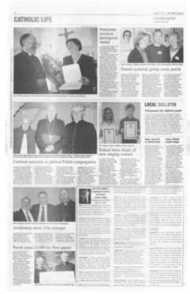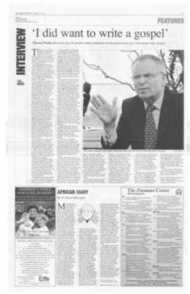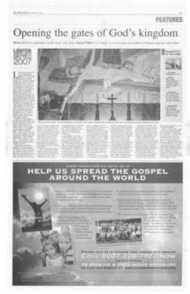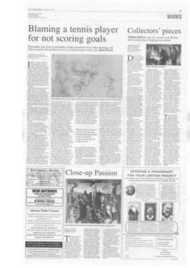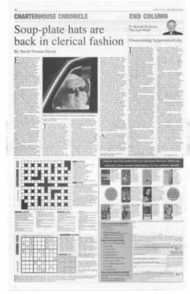Page 7, 30th March 2007
Page 7

Report an error
Noticed an error on this page?If you've noticed an error in this article please click here to report it.
Tags
Share
Related articles
AFRICAN DIARY
By Fr David McLaurin
My kind hosts in Gulu have been the Comboni missionaries. Until very recently, they have been the only male religious order in the town. It was they who, coming down from southern Sudan by boat, founded the archdiocese in the early years of the 20th century. Thanks to them, Gulu has a magnificent cathedral built in the best Italian style, which would look at home in the central piazza of a small town on the Lombard plain. The cathedral contains an estimated 800,000 bricks. These bricks are made of baked mud — one sees the process going on even today by the side of many roads — but they have to be made at a wetland or river bank. This meant that 800,000 bricks had to be carried up by the people from the river, which is a considerable distance, and the same was true for sack after sack of cement. None of these bricks is visible today, for the imposing basilica-like structure has been rendered in painted stucco. The . church of the minor seminary is in the same style, and built by the same Comboni brothers, surrounded by a pleasant three-sided cloister; inside it is a profusion of frescoed glory, with representations of St Charles Lwanga and one of his companions standing either side of the suitably ornate high altar.
The last time I was in Uganda I went to Namugongo, outside Kampala, to visit the site of the martyrdom of the Ugandan martyrs, St Charles Lwanga and his 21 companions, put to death by Kabaka Mwanga in the years 1885-87, and whose feast falls on June 3. At their canonisation Pope Paul VI said their martyrdom was "God willing, the last [of its type], so sublime, so precious was their sacrifice". It is true that no one has been killed in hatred of religion on such a scale since, but a visit to the hospital at Lacor, outside Gulu, reveals new martyrs, this time of charity.
As if the rebels of the LRA were not enough to cope with, in the final months of 2000 the Ebola virus swept through the town and its refugee population, with devastating effect. Many fled, but in the hospital some stayed to tend the sick and died of the virus themselves. Their memorial is under a tree in the hospital grounds, next to a statue of Our Lady of Lourdes. In the shade of that tree I took down their names: being well known in heaven, they ought to be better known on earth. They were: Grace Akullo, Simon Victor Ojok, Hellen Ongebo, Santina Areyemo, Immaculate Auma, Sister Pierina Asienzo, Christine Ajok, Daniel Anyetla, Monica Nyeko Aol, Margaret Odota, Florence Kiya, Christine Lanyero and Dr Matthew Christopher Lukwiya. These 13 names to my mind show that Christianity has May taken root in Uganda; and you are conscious as you read them that you have come to a place, as T S Eliot says, where prayer has been valid. To stand in this spot is reason enough to come to Gulu.
The hospital, by the way, is an excellent one, and it has a brand new children's wing funded by the American government. (That fact, and the American aid workers I met, give the lie to the belief that Americans "don't care" about Africa.) Little children come and place their hand in yours while you walk around; outside. families set up camp. Because distances are immense and transport often slow or non-existent, friends and relations who accompany the sick often sleep out in the grounds for the duration of the treatment.
blog comments powered by Disqus







